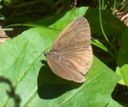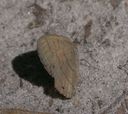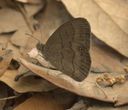Hermeuptychia Satyrs
Hermeuptychia
Classification
- Phylum: Arthropoda
- Subphylum: Hexapoda
- Class: Insecta
- Order: Lepidoptera
- Superfamily: Papilionoidea
- Family: Nymphalidae
- Subfamily: Satyrinae
- Tribe: Satyrini
- Genus: Hermeuptychia
Pronunciation
How to pronounce Hermeuptychia: /hɛr.meʊpˈtɪ.ki.ə/
These audio files are automatically generated. While they are not always 100% accurate, they are a good starting point.
Images






Summary
Hermeuptychia is a genus of satyrid butterflies known for their cryptic appearance and species diversity, which is likely underrepresented in current classifications. The genus was established by Forster in 1964 and includes several species native to North and Central America.
Habitat
Found in the Neotropical realm, associated with forested areas and open habitats where host plants are available.
Distribution
Widespread in North America and parts of Central and South America.
Diet
Hermeuptychia butterflies typically feed on the leaves of various grasses and other plants as larvae. Adult butterflies primarily feed on nectar from flowers.
Life Cycle
The life cycle consists of egg, larval (caterpillar), pupal (chrysalis), and adult stages.
Reproduction
Reproduction involves the laying of eggs on host plants, where the larvae emerge and develop.
Ecosystem Role
Members of this genus play a role in pollination and serve as a food source for various predators.
Evolution
Hermeuptychia has historically been included within a broader concept of the genus Euptychia, indicating that its evolutionary relationships may be complex.
Similar Taxa
- Euptychia
- Satyrus
Tags
- butterflies
- Lepidoptera
- Neotropical
- satyrid
- Hermeuptychia